Statistics for Management: Vodafone's Competitive Advantage Report
VerifiedAdded on 2023/01/18
|24
|1470
|55
Report
AI Summary
This report provides an in-depth analysis of how statistical methods can be applied to enhance business performance, using Vodafone as a case study. It begins with an introduction to statistics, defining key characteristics and outlining various statistical methods like central tendency and correlation. The report then discusses different types of data (primary and secondary) and their sources, such as questionnaires and interviews. It differentiates between samples and populations, and highlights the value of statistical methods in achieving business objectives. Descriptive and inferential statistics are compared, and the report includes key findings, such as financial data for Apple, Microsoft, Amazon, and Netflix, analyzed to demonstrate the practical application of statistical analysis in business decision-making. The report concludes with a list of references.
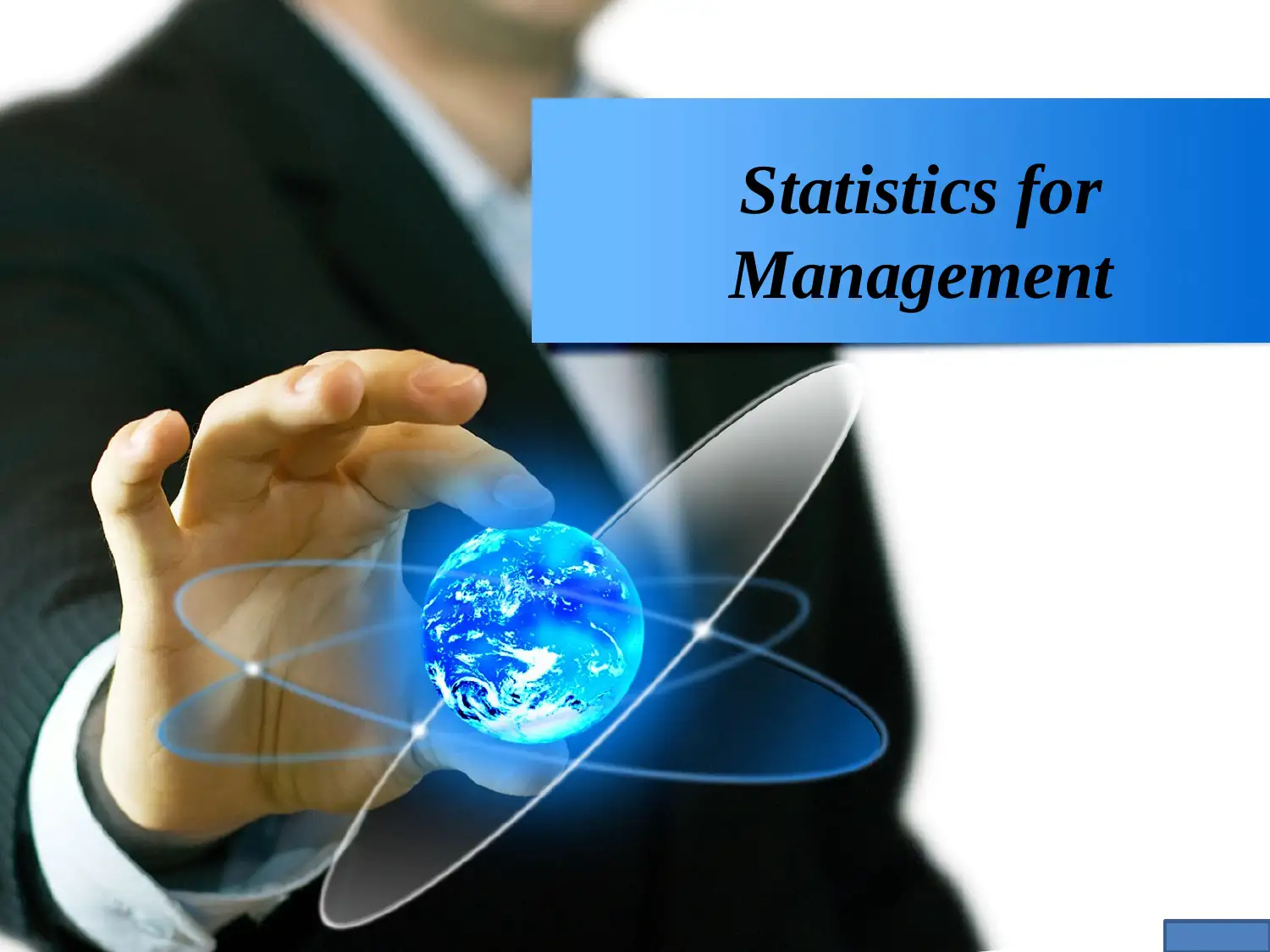
Statistics for
Management
Management
Paraphrase This Document
Need a fresh take? Get an instant paraphrase of this document with our AI Paraphraser
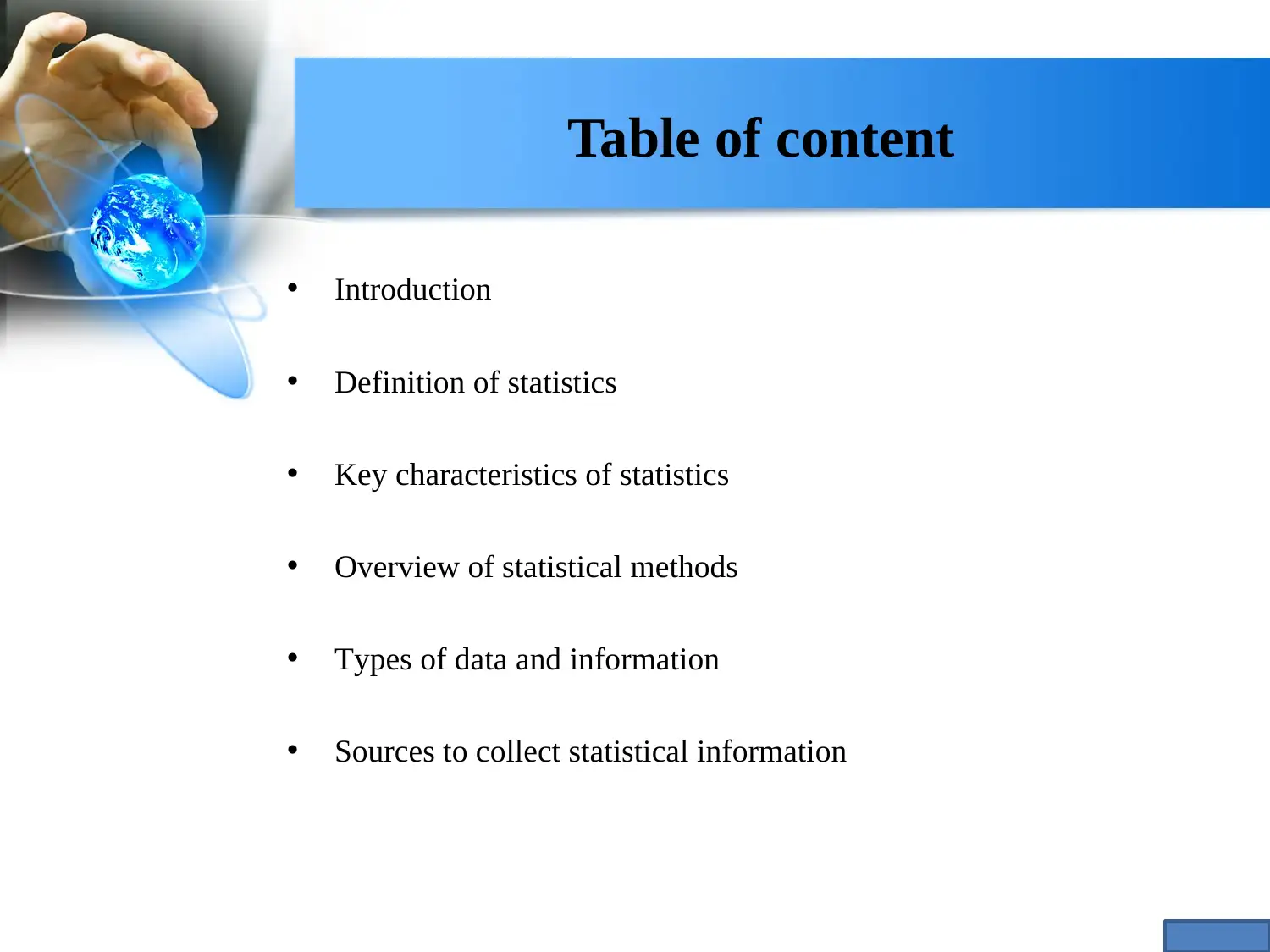
Table of content
• Introduction
• Definition of statistics
• Key characteristics of statistics
• Overview of statistical methods
• Types of data and information
• Sources to collect statistical information
• Introduction
• Definition of statistics
• Key characteristics of statistics
• Overview of statistical methods
• Types of data and information
• Sources to collect statistical information
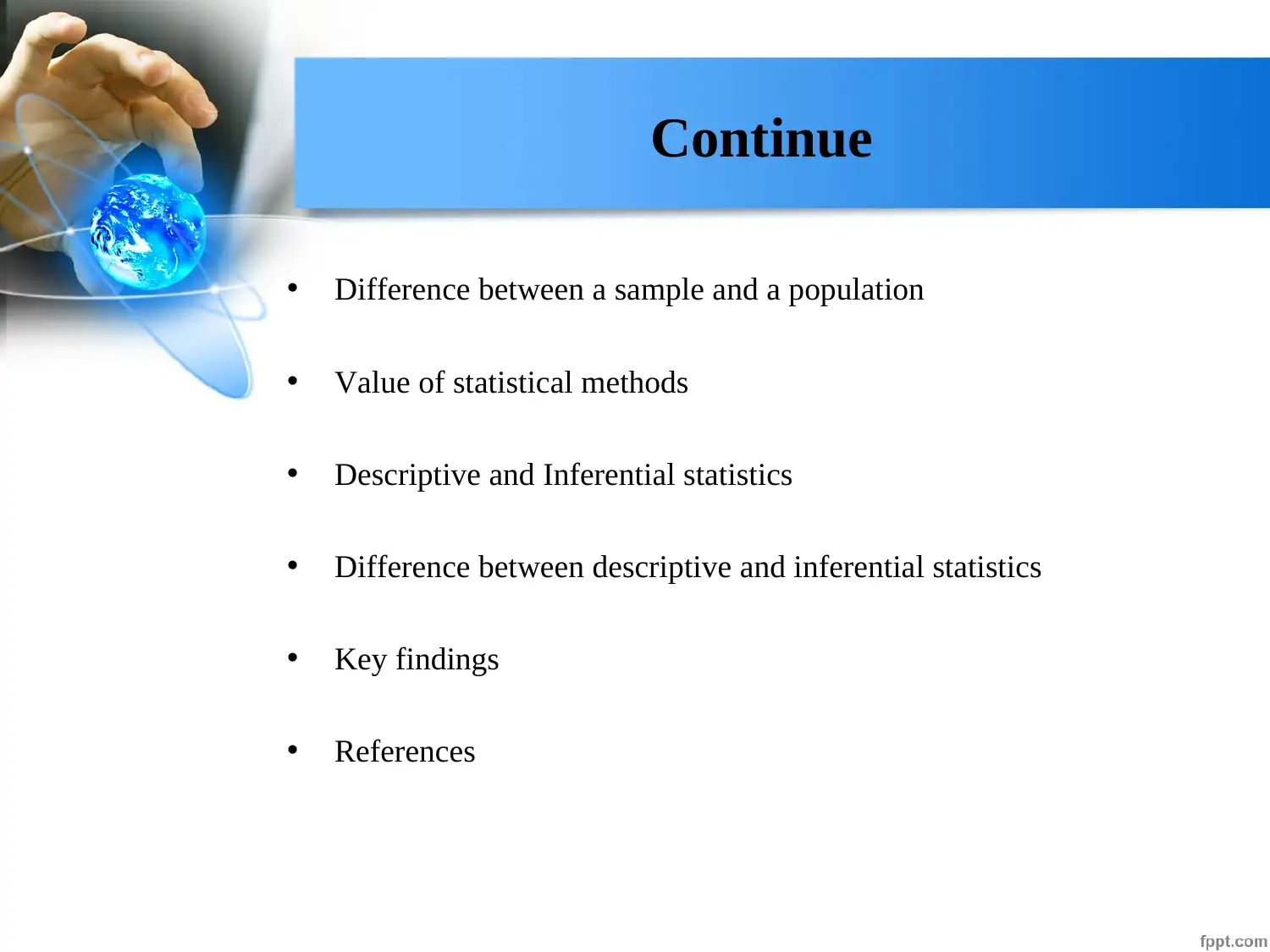
Continue
• Difference between a sample and a population
• Value of statistical methods
• Descriptive and Inferential statistics
• Difference between descriptive and inferential statistics
• Key findings
• References
• Difference between a sample and a population
• Value of statistical methods
• Descriptive and Inferential statistics
• Difference between descriptive and inferential statistics
• Key findings
• References
⊘ This is a preview!⊘
Do you want full access?
Subscribe today to unlock all pages.

Trusted by 1+ million students worldwide
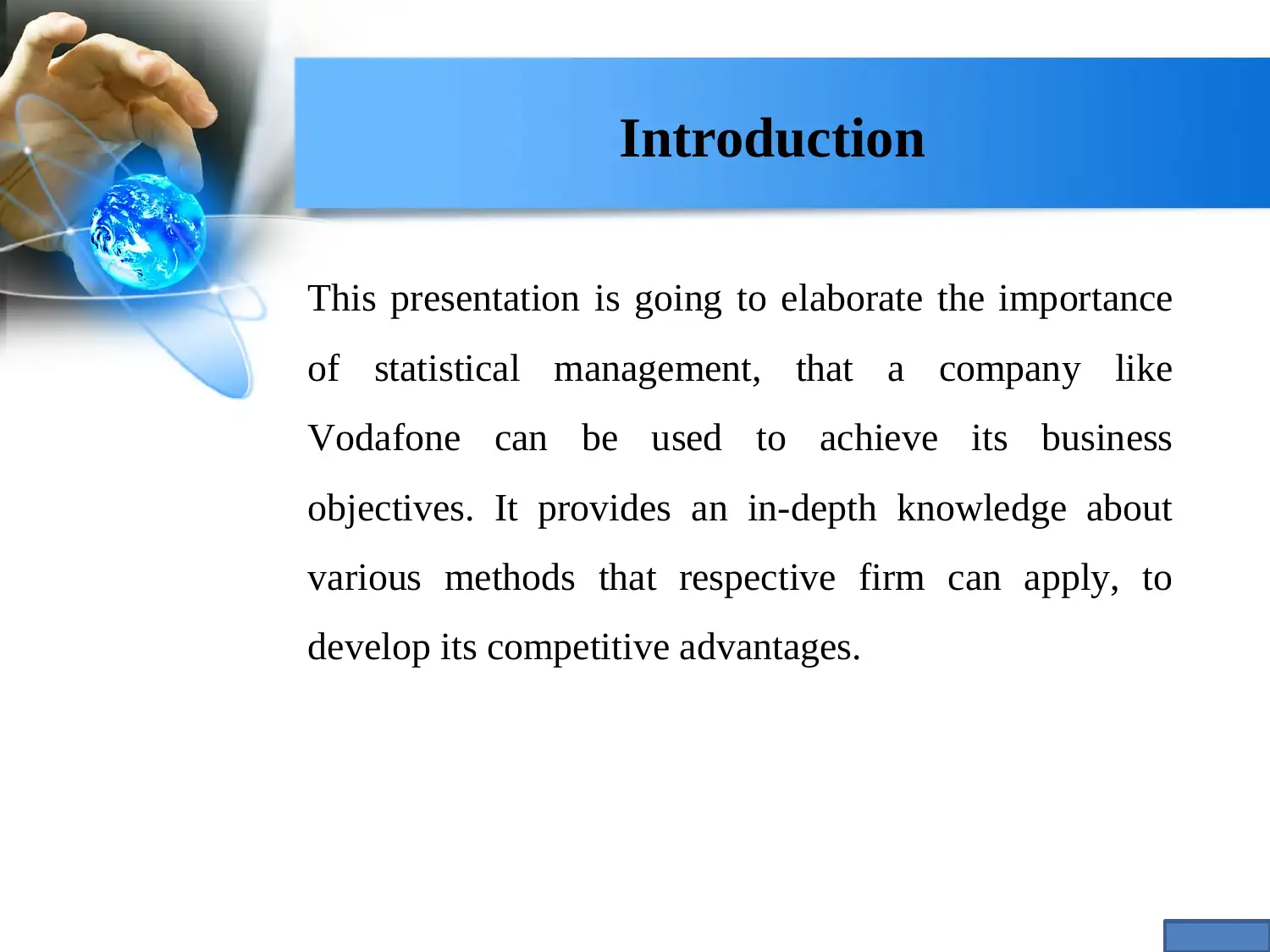
Introduction
This presentation is going to elaborate the importance
of statistical management, that a company like
Vodafone can be used to achieve its business
objectives. It provides an in-depth knowledge about
various methods that respective firm can apply, to
develop its competitive advantages.
This presentation is going to elaborate the importance
of statistical management, that a company like
Vodafone can be used to achieve its business
objectives. It provides an in-depth knowledge about
various methods that respective firm can apply, to
develop its competitive advantages.
Paraphrase This Document
Need a fresh take? Get an instant paraphrase of this document with our AI Paraphraser
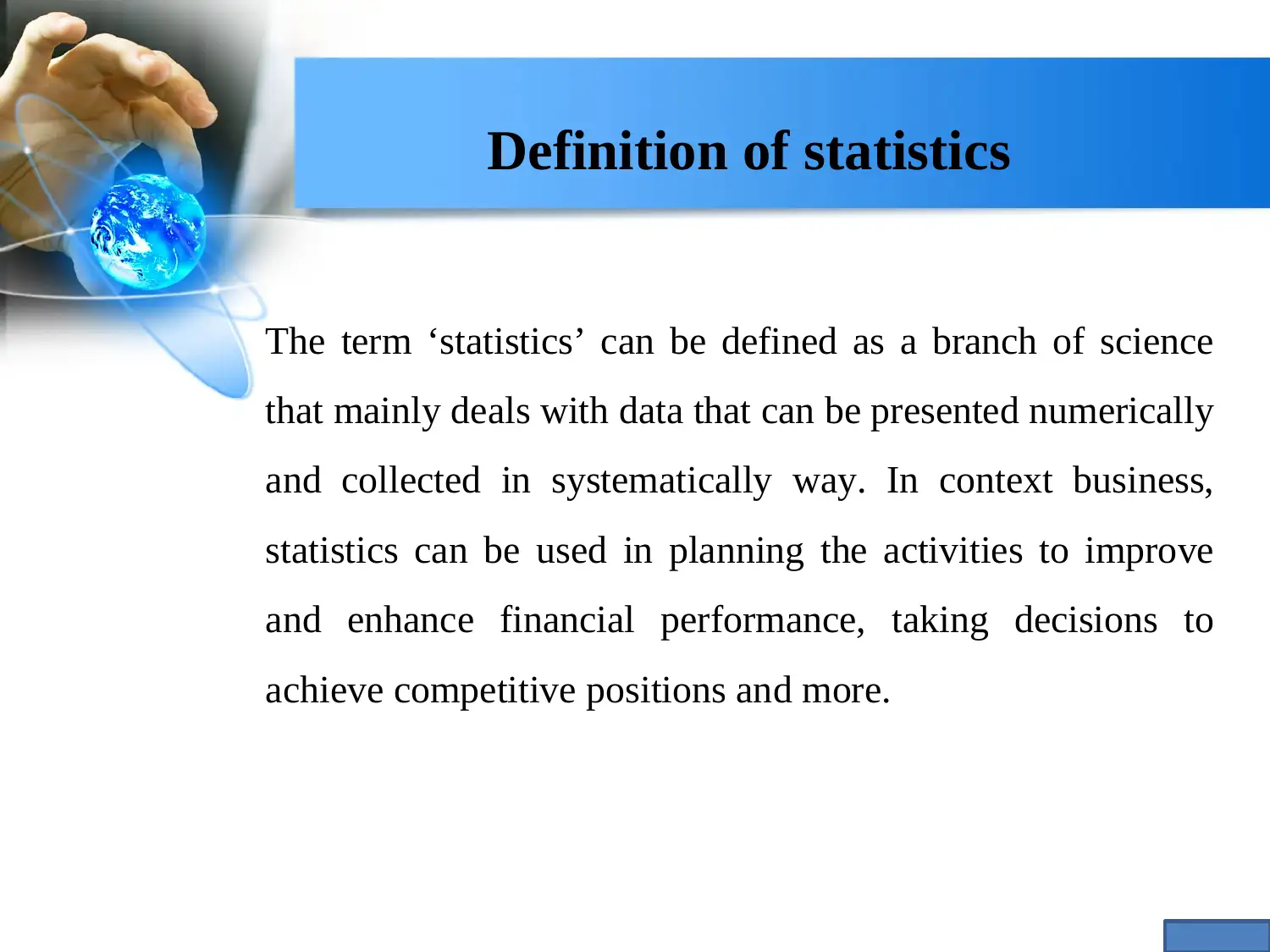
Definition of statistics
The term ‘statistics’ can be defined as a branch of science
that mainly deals with data that can be presented numerically
and collected in systematically way. In context business,
statistics can be used in planning the activities to improve
and enhance financial performance, taking decisions to
achieve competitive positions and more.
The term ‘statistics’ can be defined as a branch of science
that mainly deals with data that can be presented numerically
and collected in systematically way. In context business,
statistics can be used in planning the activities to improve
and enhance financial performance, taking decisions to
achieve competitive positions and more.
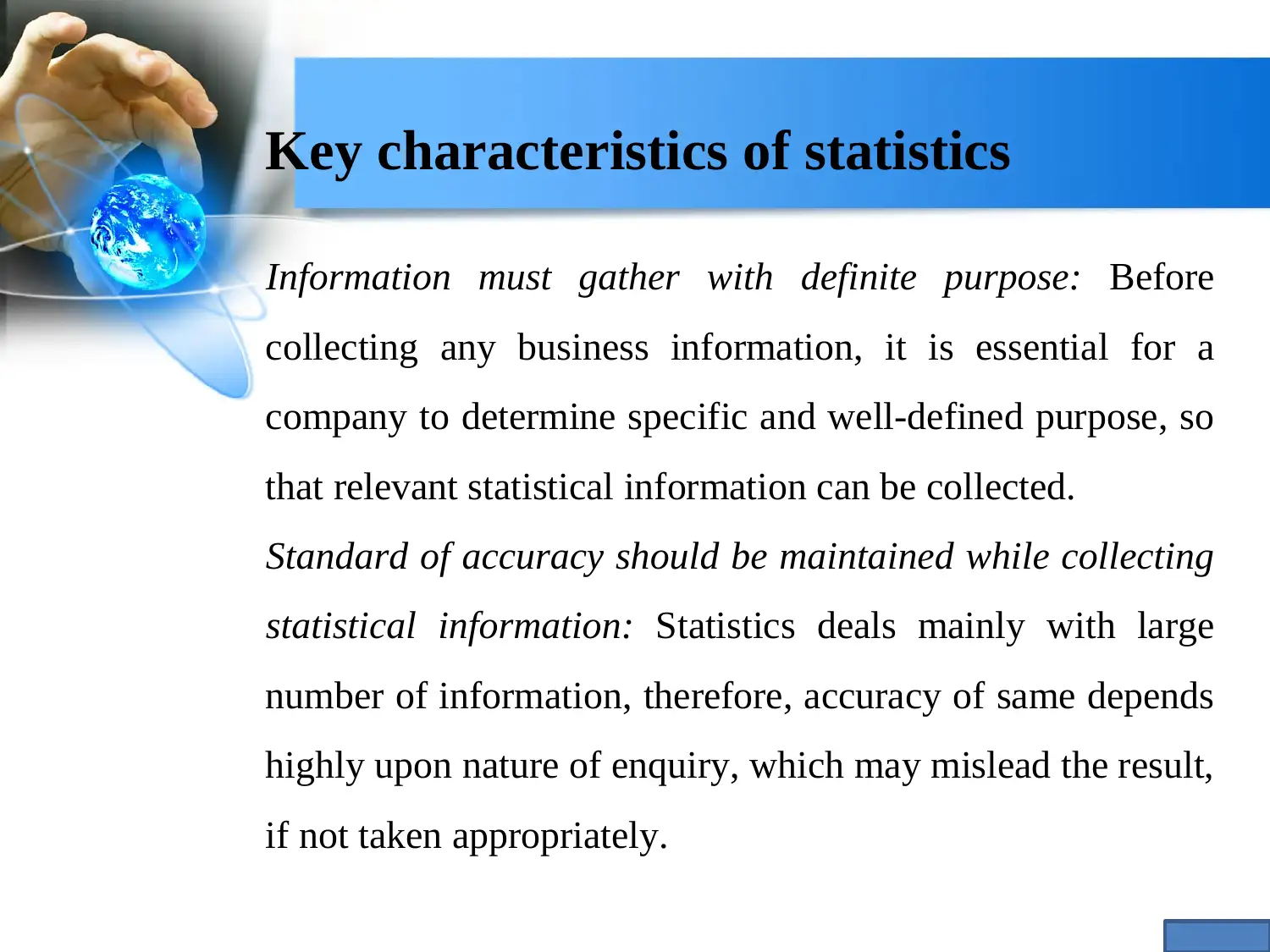
Key characteristics of statistics
Information must gather with definite purpose: Before
collecting any business information, it is essential for a
company to determine specific and well-defined purpose, so
that relevant statistical information can be collected.
Standard of accuracy should be maintained while collecting
statistical information: Statistics deals mainly with large
number of information, therefore, accuracy of same depends
highly upon nature of enquiry, which may mislead the result,
if not taken appropriately.
Information must gather with definite purpose: Before
collecting any business information, it is essential for a
company to determine specific and well-defined purpose, so
that relevant statistical information can be collected.
Standard of accuracy should be maintained while collecting
statistical information: Statistics deals mainly with large
number of information, therefore, accuracy of same depends
highly upon nature of enquiry, which may mislead the result,
if not taken appropriately.
⊘ This is a preview!⊘
Do you want full access?
Subscribe today to unlock all pages.

Trusted by 1+ million students worldwide
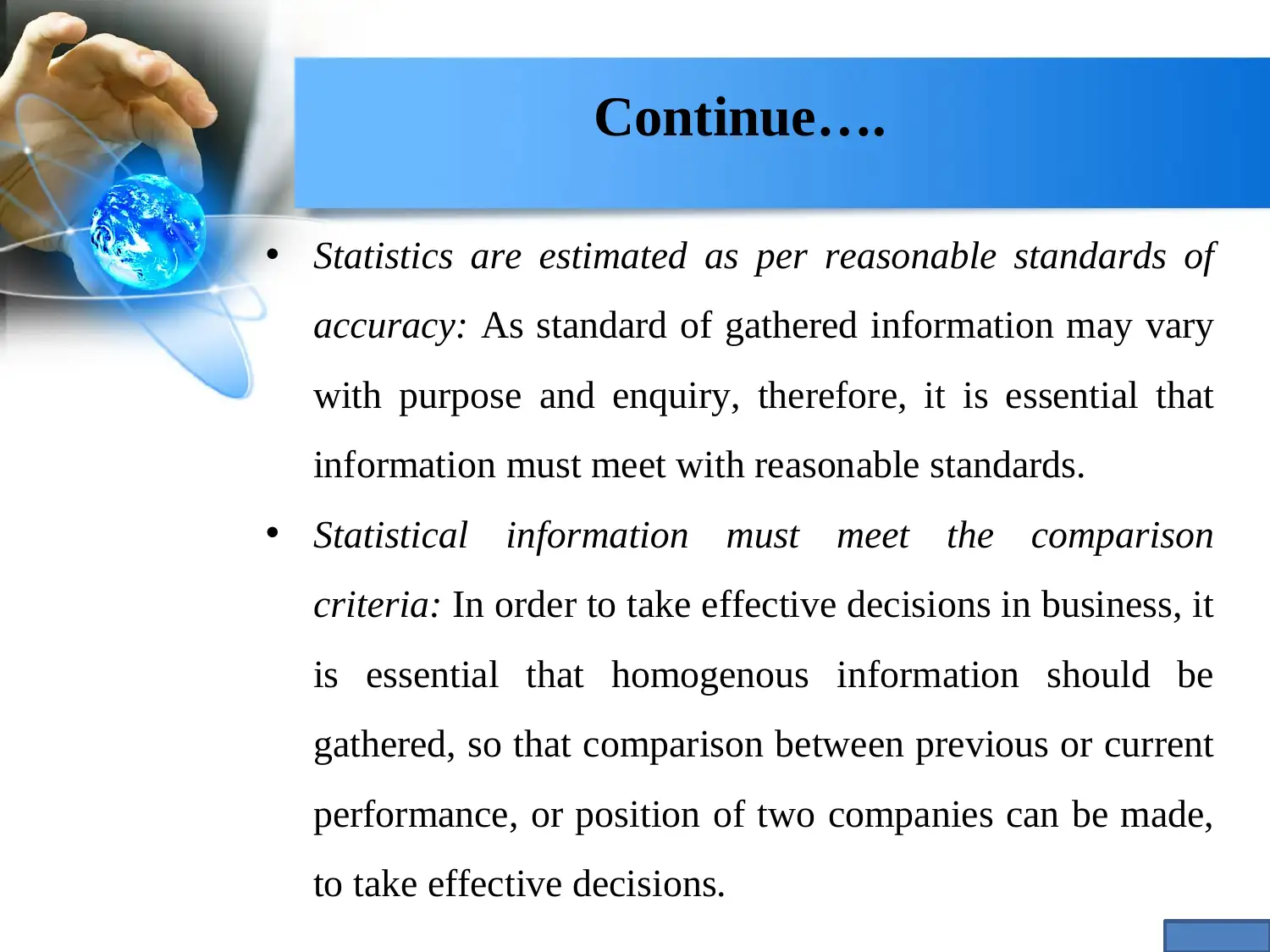
Continue….
• Statistics are estimated as per reasonable standards of
accuracy: As standard of gathered information may vary
with purpose and enquiry, therefore, it is essential that
information must meet with reasonable standards.
• Statistical information must meet the comparison
criteria: In order to take effective decisions in business, it
is essential that homogenous information should be
gathered, so that comparison between previous or current
performance, or position of two companies can be made,
to take effective decisions.
• Statistics are estimated as per reasonable standards of
accuracy: As standard of gathered information may vary
with purpose and enquiry, therefore, it is essential that
information must meet with reasonable standards.
• Statistical information must meet the comparison
criteria: In order to take effective decisions in business, it
is essential that homogenous information should be
gathered, so that comparison between previous or current
performance, or position of two companies can be made,
to take effective decisions.
Paraphrase This Document
Need a fresh take? Get an instant paraphrase of this document with our AI Paraphraser
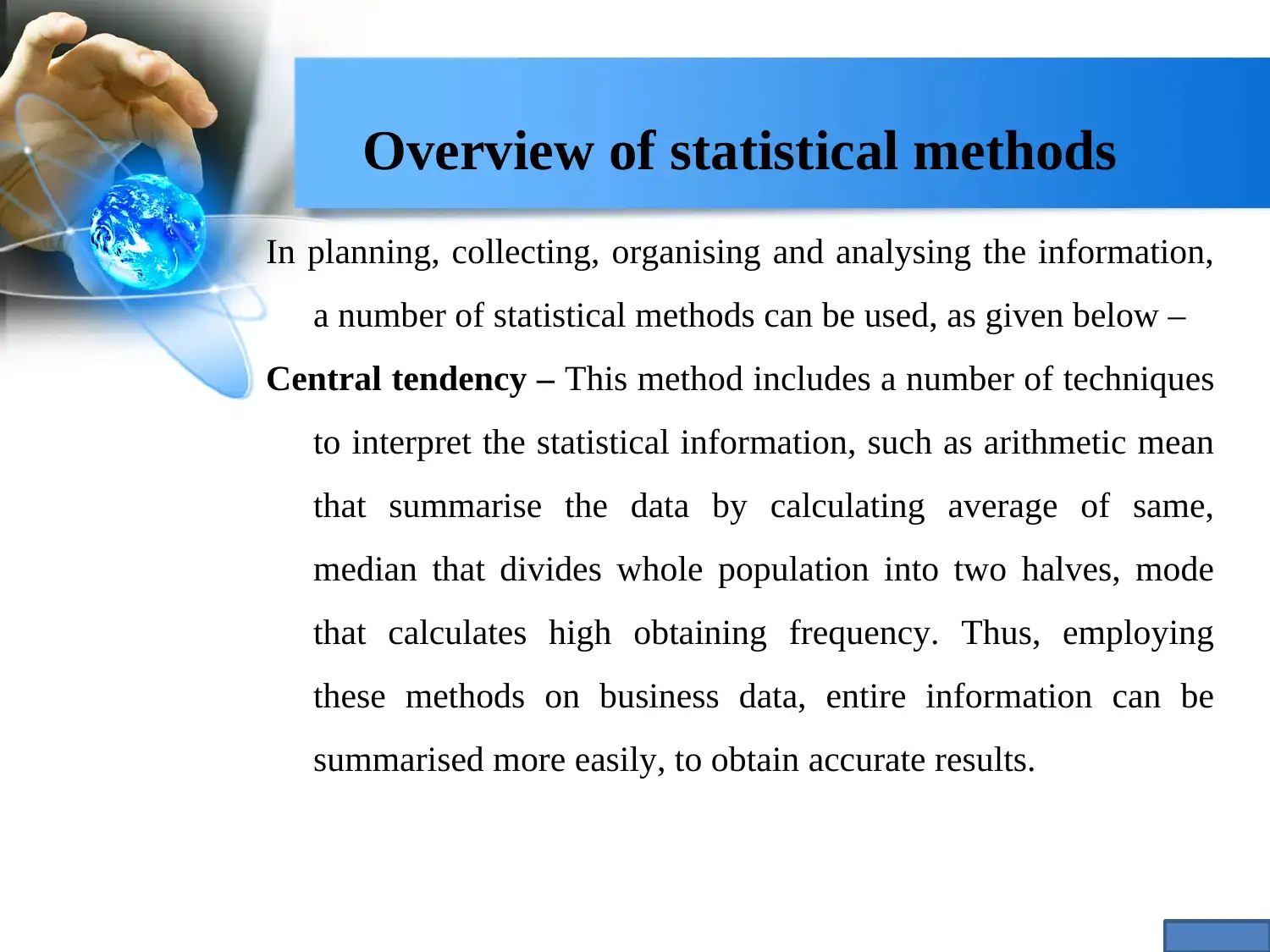
Overview of statistical methods
In planning, collecting, organising and analysing the information,
a number of statistical methods can be used, as given below –
Central tendency – This method includes a number of techniques
to interpret the statistical information, such as arithmetic mean
that summarise the data by calculating average of same,
median that divides whole population into two halves, mode
that calculates high obtaining frequency. Thus, employing
these methods on business data, entire information can be
summarised more easily, to obtain accurate results.
In planning, collecting, organising and analysing the information,
a number of statistical methods can be used, as given below –
Central tendency – This method includes a number of techniques
to interpret the statistical information, such as arithmetic mean
that summarise the data by calculating average of same,
median that divides whole population into two halves, mode
that calculates high obtaining frequency. Thus, employing
these methods on business data, entire information can be
summarised more easily, to obtain accurate results.
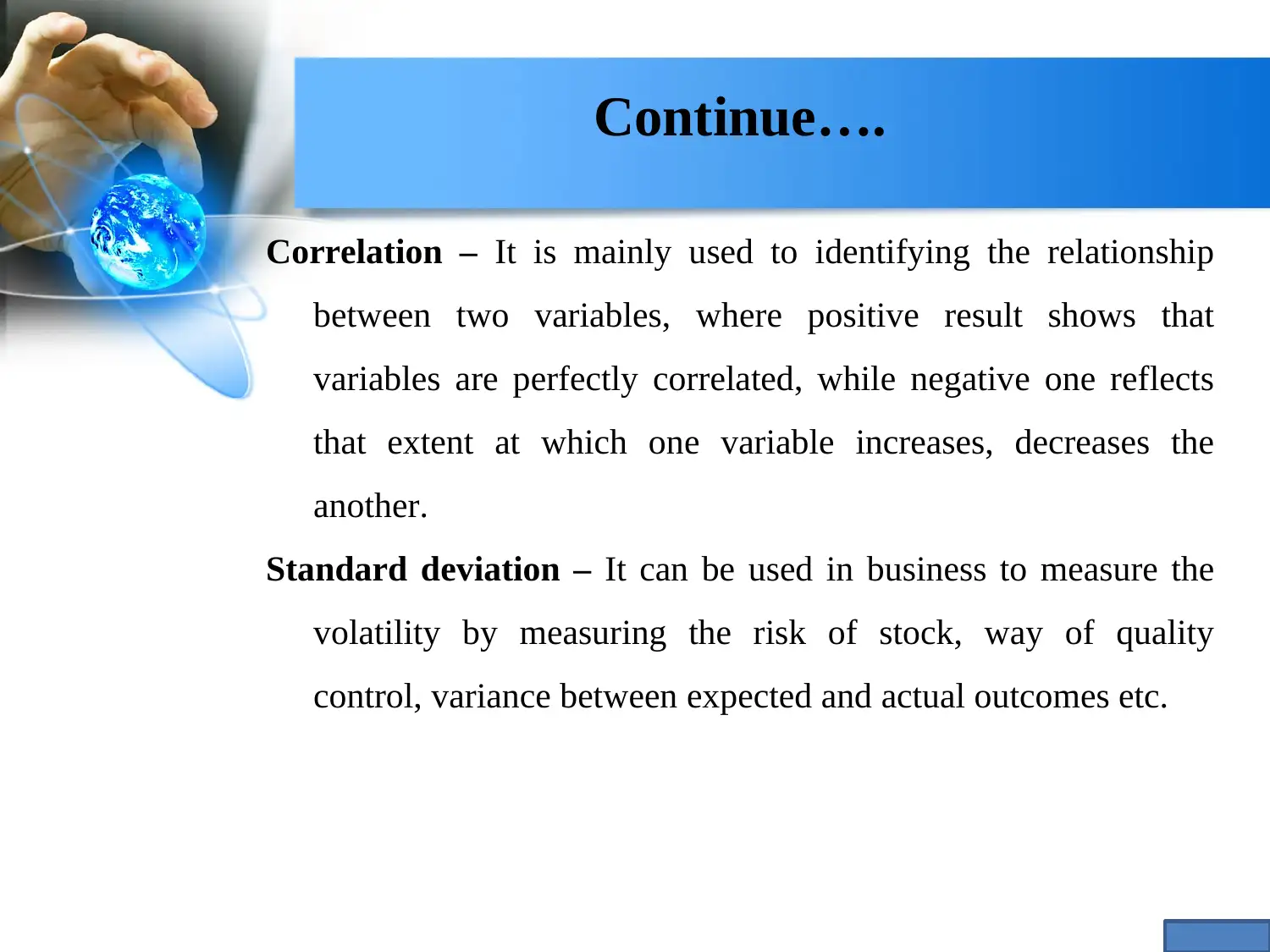
Continue….
Correlation – It is mainly used to identifying the relationship
between two variables, where positive result shows that
variables are perfectly correlated, while negative one reflects
that extent at which one variable increases, decreases the
another.
Standard deviation – It can be used in business to measure the
volatility by measuring the risk of stock, way of quality
control, variance between expected and actual outcomes etc.
Correlation – It is mainly used to identifying the relationship
between two variables, where positive result shows that
variables are perfectly correlated, while negative one reflects
that extent at which one variable increases, decreases the
another.
Standard deviation – It can be used in business to measure the
volatility by measuring the risk of stock, way of quality
control, variance between expected and actual outcomes etc.
⊘ This is a preview!⊘
Do you want full access?
Subscribe today to unlock all pages.

Trusted by 1+ million students worldwide
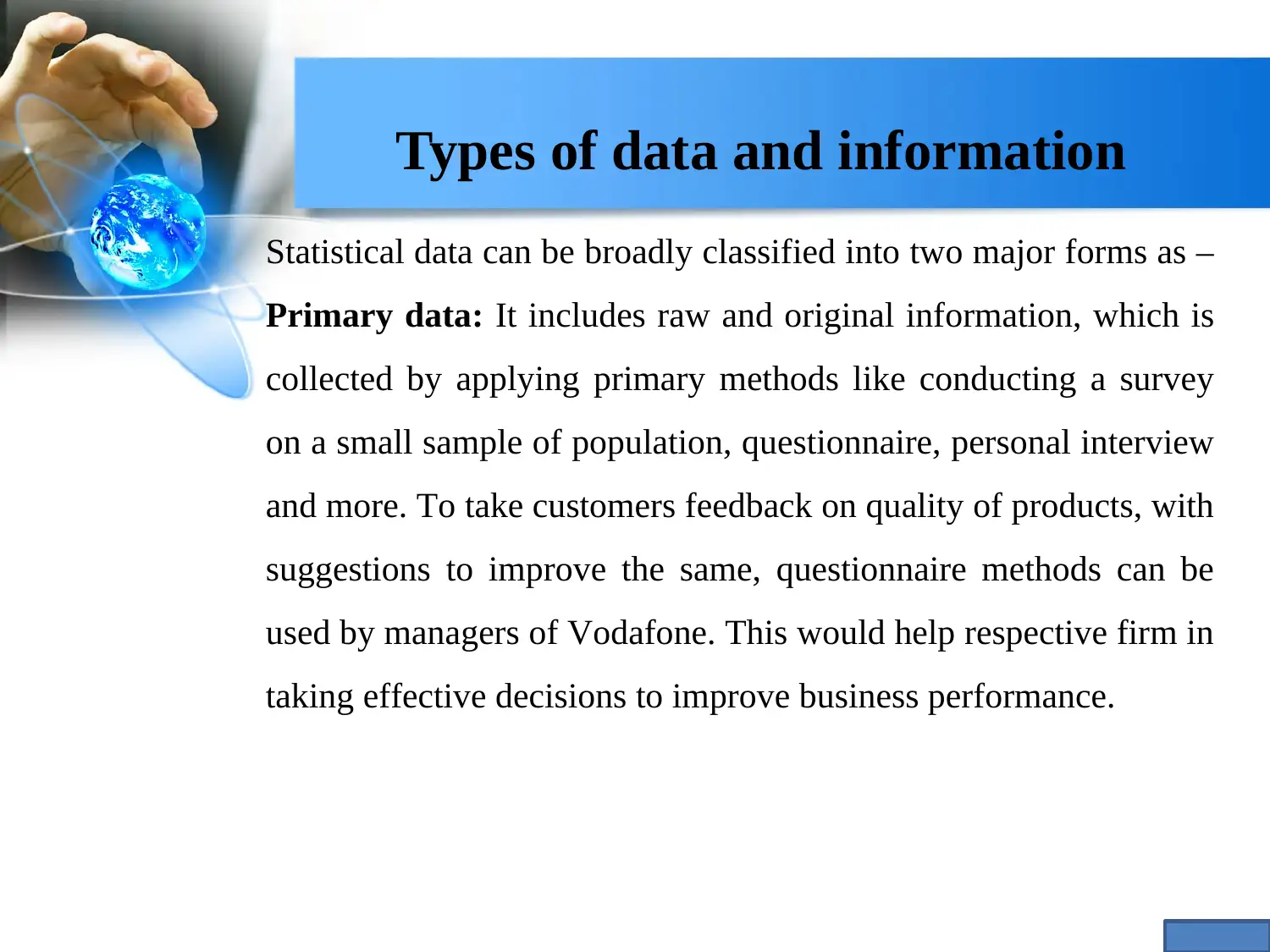
Types of data and information
Statistical data can be broadly classified into two major forms as –
Primary data: It includes raw and original information, which is
collected by applying primary methods like conducting a survey
on a small sample of population, questionnaire, personal interview
and more. To take customers feedback on quality of products, with
suggestions to improve the same, questionnaire methods can be
used by managers of Vodafone. This would help respective firm in
taking effective decisions to improve business performance.
Statistical data can be broadly classified into two major forms as –
Primary data: It includes raw and original information, which is
collected by applying primary methods like conducting a survey
on a small sample of population, questionnaire, personal interview
and more. To take customers feedback on quality of products, with
suggestions to improve the same, questionnaire methods can be
used by managers of Vodafone. This would help respective firm in
taking effective decisions to improve business performance.
Paraphrase This Document
Need a fresh take? Get an instant paraphrase of this document with our AI Paraphraser
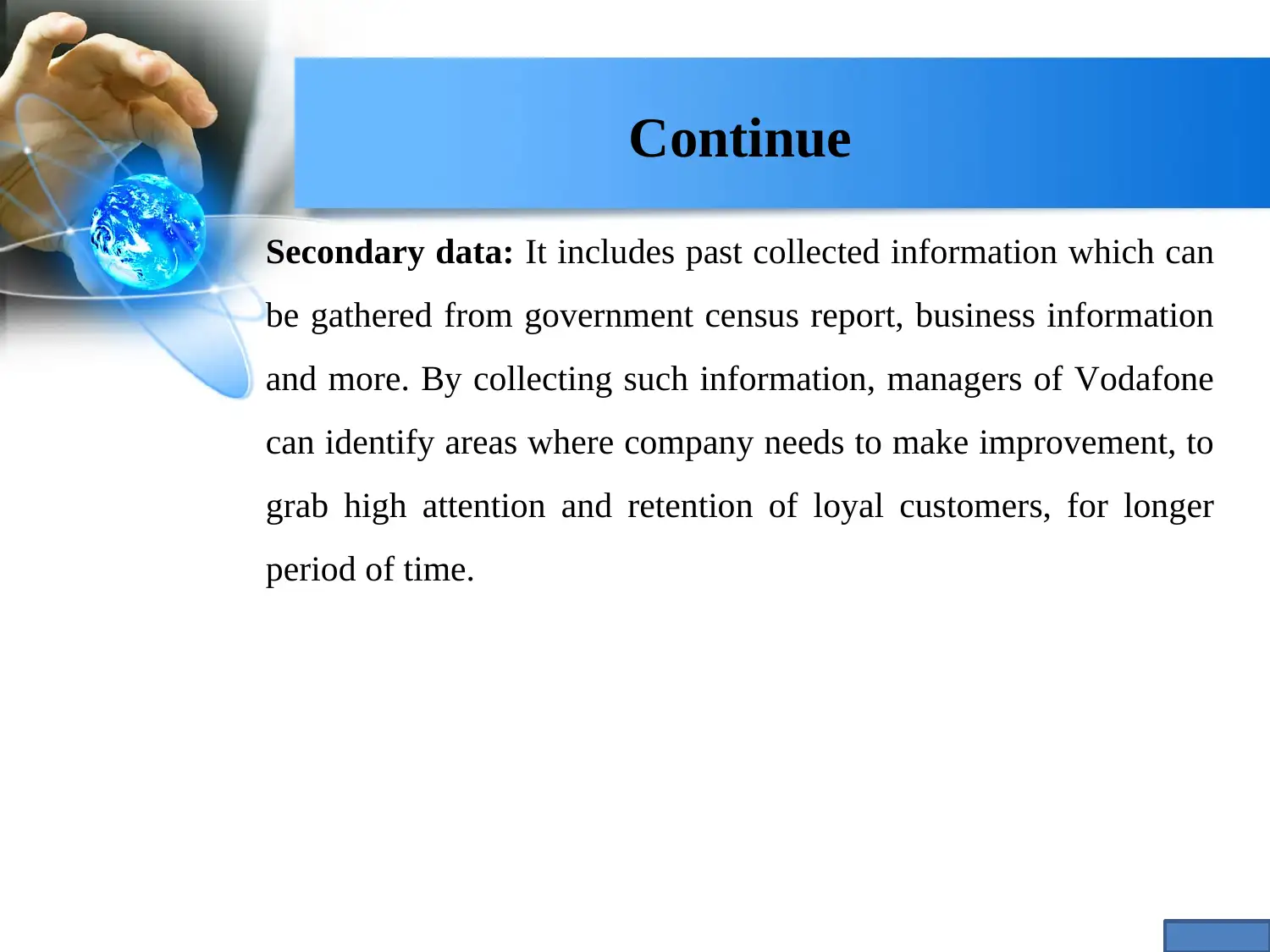
Continue
Secondary data: It includes past collected information which can
be gathered from government census report, business information
and more. By collecting such information, managers of Vodafone
can identify areas where company needs to make improvement, to
grab high attention and retention of loyal customers, for longer
period of time.
Secondary data: It includes past collected information which can
be gathered from government census report, business information
and more. By collecting such information, managers of Vodafone
can identify areas where company needs to make improvement, to
grab high attention and retention of loyal customers, for longer
period of time.
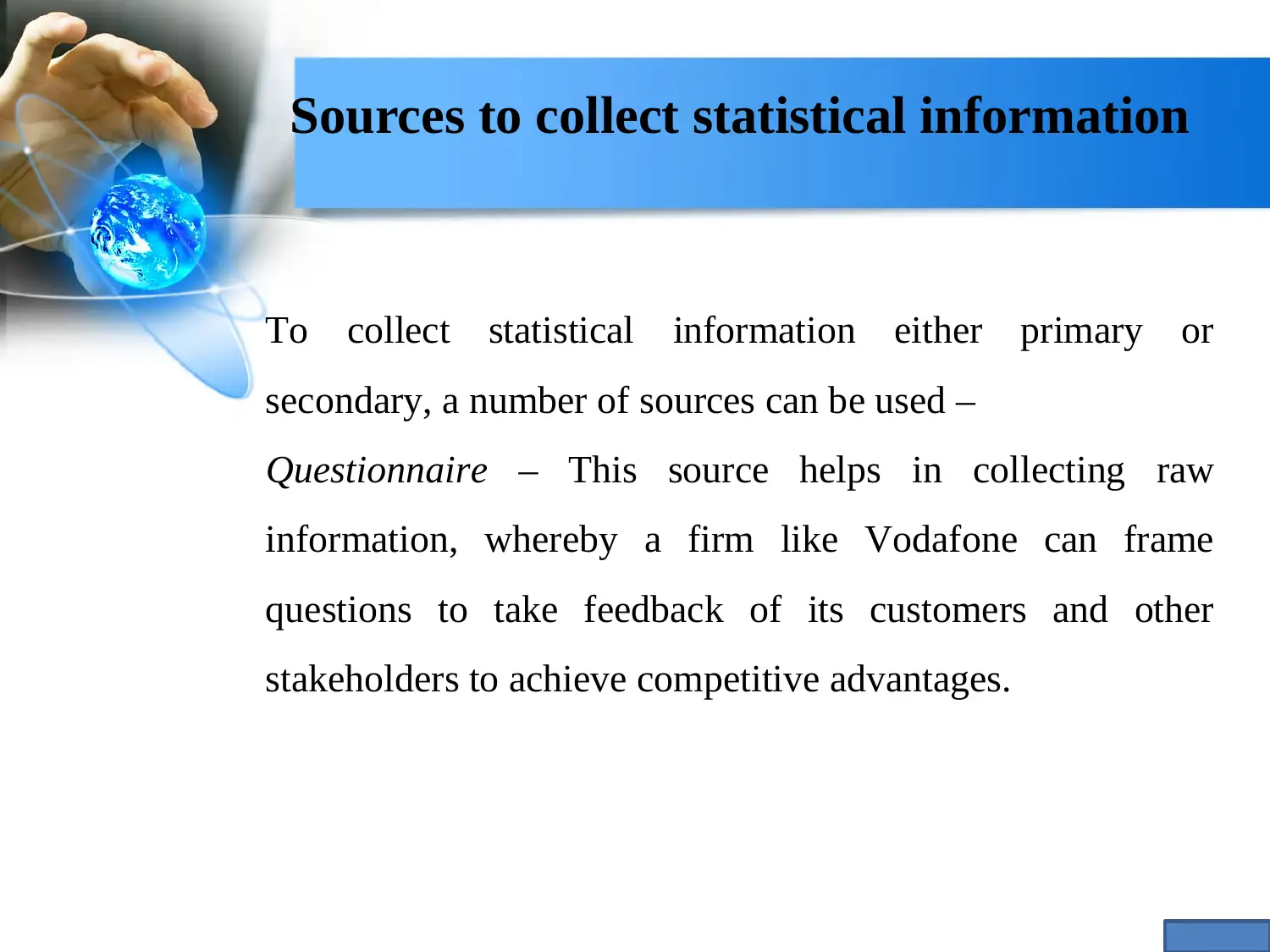
Sources to collect statistical information
To collect statistical information either primary or
secondary, a number of sources can be used –
Questionnaire – This source helps in collecting raw
information, whereby a firm like Vodafone can frame
questions to take feedback of its customers and other
stakeholders to achieve competitive advantages.
To collect statistical information either primary or
secondary, a number of sources can be used –
Questionnaire – This source helps in collecting raw
information, whereby a firm like Vodafone can frame
questions to take feedback of its customers and other
stakeholders to achieve competitive advantages.
⊘ This is a preview!⊘
Do you want full access?
Subscribe today to unlock all pages.

Trusted by 1+ million students worldwide
1 out of 24
Related Documents
Your All-in-One AI-Powered Toolkit for Academic Success.
+13062052269
info@desklib.com
Available 24*7 on WhatsApp / Email
![[object Object]](/_next/static/media/star-bottom.7253800d.svg)
Unlock your academic potential
Copyright © 2020–2025 A2Z Services. All Rights Reserved. Developed and managed by ZUCOL.





